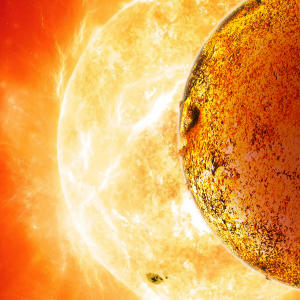
This artist's rendering provided by the Harvard-Smithsonian Center for Astrophysics on Wednesday, Oct. …
But hold off on the travel plans. This rocky world is so close to its sun that it's at least 2,000 degrees hotter than here, almost certainly too hot for life.
Astrophysicists reported Wednesday in the journal Nature that the exoplanet Kepler-78b appears to be made of rock and iron just like Earth. They measured the planet's mass to determine its density and content. It's actually a little bigger than Earth and nearly double its mass, or weight.
Kepler-78b is located in the Cygnus constellation hundreds of light-years away. Incredibly, it orbits its sun every 8½ hours, a mystery to astronomers who doubt it could have formed or moved that close to a star. They agree the planet will be sucked up by the sun in a few billion years, so its time remaining, astronomically speaking, is short.
More than 1,000 exoplanets — worlds outside our solar system — have been confirmed so far.
NASA's Kepler Space Telescope, used to discover Kepler-78b, has identified 3,500 more potential candidates. The telescope lost its precise pointing ability earlier this year, and NASA has given up trying to fix it.
Scientific teams in the United States and Switzerland used ground observatories to measure Kepler-78b.
___
Online:
Kepler: http://kepler.nasa.gov/


No comments:
Post a Comment